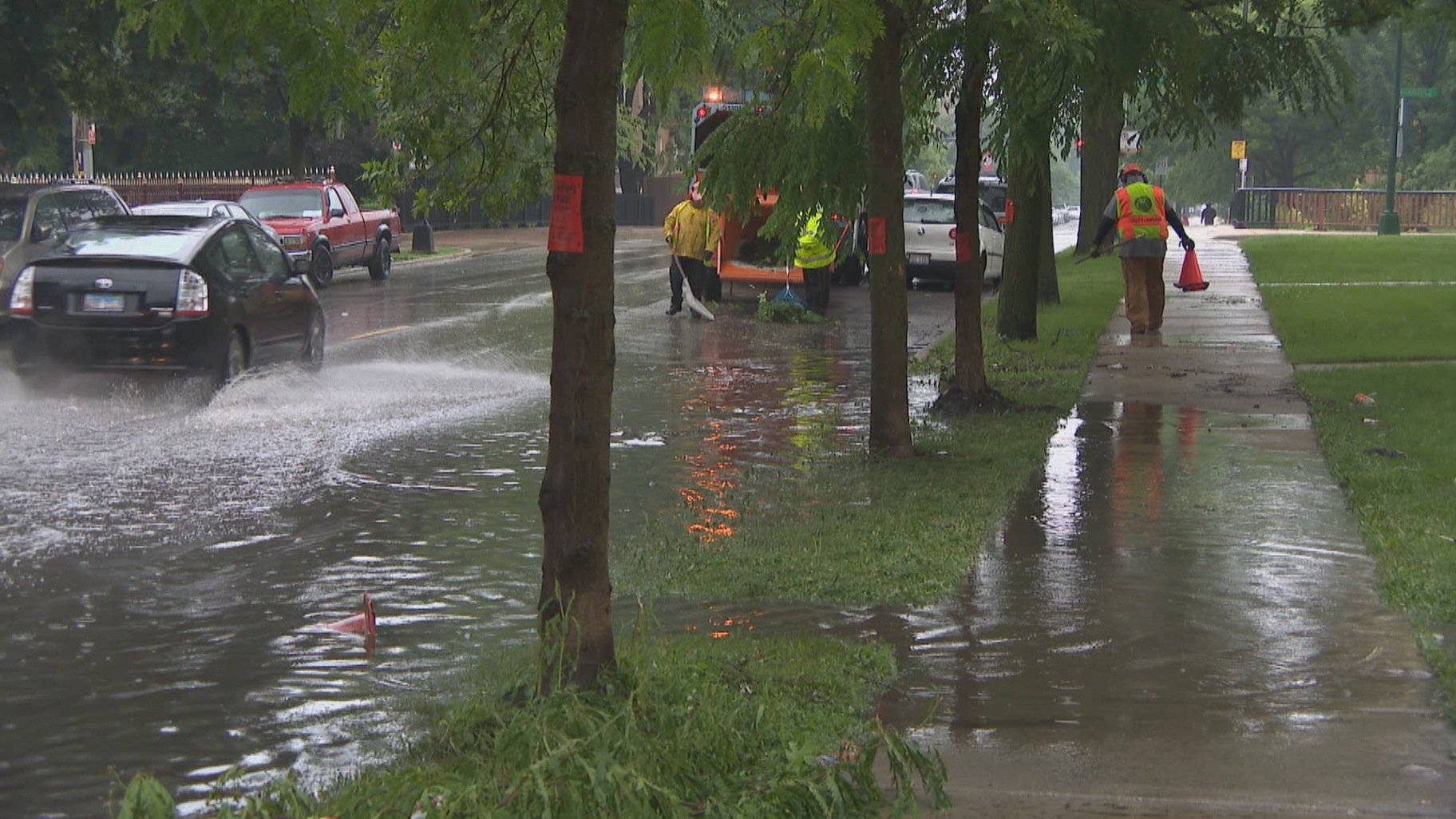Addressing the Growing Imbalance Between Water Scarcity and Flooding in Northeastern Illinois
Addressing the Growing Imbalance Between Water Scarcity and ... WTTW News


Chicago Faces Water Shortage Threat, Calls for Sustainable Solutions

It might come as a surprise given our proximity to Lake Michigan, but Chicago’s neighbors southwest of the city could soon be facing a water shortage.
“We often think about Lake Michigan or about the Great Lakes as being an infinite supply of water when, in fact, it isn’t,” said Teresa Córdova, director of the Great Cities Institute at the University of Illinois-Chicago. “This is our source of drinking water here in this region. And yet, if we go just southwest of here, the Cambrian-Ordovician aquifer is beginning to collapse. It’s depleting, and this is a non-replenishable aquifer.”
Thanks to our sponsors:
The Challenge of Water Scarcity and Flooding
The Cambrian-Ordovician aquifer supplies groundwater to communities in Will, Kane and DuPage counties.
This poses the challenge of managing and addressing a growing imbalance between flooding and water scarcity in the region’s water geography.
A Plan for Sustainable Water Management
Córdova’s team at the Great Cities Institute has revealed a plan to recycle Chicago’s wastewater in order to prevent a future water shortage crisis.
“Joliet, for example, which has a very high industrial footprint, is looking naturally for a source of water and they came to the city of Chicago . … We have entered into an agreement to provide them water,” Córdova said. “But the water we’re providing them is directly from our fresh water source, Lake Michigan. What we’re arguing is that this is not sustainable, that particularly when and if that aquifer further depletes and collapses, there’ll be more communities that’ll be seeking a source of water and we just don’t have the amount of water to provide, that’s both limited by how much we can draw out as well as what’s actually there.”
Her team is proposing a “dual-pipeline” system: one pipeline used for conveying treated wastewater to industrial sites and one for conveying drinking water everywhere else, according to Córdova.
Flooding and Scarcity: A Paradox
This plan also comes amid heavy flooding on the West Side of Chicago, including neighboring Cicero and Berwyn. According to the Great Cities Institute report, flooding and scarcity can “wildly alternate in the same place or transpire in proximity to each other.”
“There’s an irony right there, right?” Córdova said. “You think, OK, that given place is just going to have flooding, another place is going to have a drought and yet in close proximity, we’re experiencing the same thing. So we may have flooding, for example, in the Berwyn and Cicero area and then just down the road, they’re experiencing drought, and a lot of this has to do with the changing nature of storm systems, the ways in which the storms are forming and the way they’re concentrating and dumping large amounts of water. But because the area might be in drought, there isn’t enough absorption of that water that’s occurring.”
Devastating Consequences for Communities
Irene Romulo, development and community engagement coordinator with Cicero Independiente, said recent weeks’ floods from heavy rain have been “devastating.” Romulo herself is a resident of Cicero.
“Cicero is a working-class community, and people here have been saving for years to be able to afford their first homes,” Romulo said. “There’s people who live in basements despite the risks because that’s all they can afford. At the different hearings and meetings that we’ve been going to, we’ve been speaking to people who are frustrated that they’re not getting any answers, that they don’t know if they will receive any financial assistance since people are expressing that they can’t meet their basic needs.”
Some of the people whom Romulo and her team spoke to said they no longer have places to sleep or live due to the flooding of their spaces.
“There was one woman that I’ve been speaking to who waited 15 days for her landlord to replace her refrigerator and her stove,” Romulo said. “So for those 15 days, she was unable to cook and have food in her house for her children. So really, it’s a lot of devastation.”
The town of Cicero held a public meeting this past Tuesday, where people called on help and answers from elected officials.
“A lot of people are asking first and foremost for financial assistance right now to make sure that they can make necessary repairs and meet their basic needs … having financial assistance to either relocate if they can no longer go back to their basements or to find food,” Romulo said. “There’s a food pantry here in the area that services about 175 families a week, but the food pantry was also affected by the floods and has closed for the entire month of July.”
Flooding in Cicero is not something new, according to Romulo.
“There haven’t been those infrastructure changes that are needed to ensure that we’re prepared for any additional floods that might come in the future,” Romulo said. “They’ve talked about the lack of green spaces, too, and ensuring that we have access to infrastructure, that something needs to be done.”
Sustainable Solutions for the Future
To help mitigate these issues, Córdova pointed to greener infrastructure and the slowed down use of fossil fuels.
“One of the things I think we’re gonna start seeing more of, and we’re encouraging this as well, is the use of green infrastructure and innovative infrastructures that decentralizes some of this water,” Córdova said. “So what we’re really looking to do, when I say we, I think we’re promoting this … and the reclamation district I think is pursuing more possibilities and alternatives for how we can approach
SDGs, Targets and Indicators
-
SDG 6: Clean Water and Sanitation
- Target 6.4: By 2030, substantially increase water-use efficiency across all sectors and ensure sustainable withdrawals and supply of freshwater to address water scarcity
- Indicator 6.4.1: Change in water-use efficiency over time
- Indicator 6.4.2: Level of water stress
-
SDG 11: Sustainable Cities and Communities
- Target 11.5: By 2030, significantly reduce the number of deaths and the number of people affected and substantially decrease the direct economic losses relative to global gross domestic product caused by disasters, including water-related disasters, with a focus on protecting the poor and people in vulnerable situations
- Indicator 11.5.1: Number of deaths, missing persons and directly affected persons attributed to disasters per 100,000 population
- Indicator 11.5.2: Direct economic loss attributed to disasters in relation to global GDP, including disaster damage to critical infrastructure and disruption of basic services
The article addresses two Sustainable Development Goals (SDGs) – SDG 6: Clean Water and Sanitation, and SDG 11: Sustainable Cities and Communities.
Under SDG 6, the article highlights the issue of water scarcity in the region due to the depletion of the Cambrian-Ordovician aquifer. The proposed plan to recycle Chicago’s wastewater is aimed at ensuring a sustainable supply of freshwater and preventing a future water shortage crisis. This aligns with Target 6.4, which focuses on increasing water-use efficiency and ensuring sustainable withdrawals and supply of freshwater to address water scarcity. The article also mentions the challenge of managing the growing imbalance between flooding and water scarcity, which can be measured using Indicator 6.4.1 (change in water-use efficiency over time) and Indicator 6.4.2 (level of water stress).
Under SDG 11, the article discusses the issue of flooding and its impact on communities like Cicero. The lack of infrastructure changes and green spaces exacerbates the flooding problem. Target 11.5 aims to reduce the number of deaths, people affected, and economic losses caused by disasters, including water-related disasters. The article mentions the devastating effects of flooding on the community, which can be measured using Indicator 11.5.1 (number of deaths, missing persons, and directly affected persons attributed to disasters per 100,000 population) and Indicator 11.5.2 (direct economic loss attributed to disasters in relation to global GDP).
| SDGs | Targets | Indicators |
|---|---|---|
| SDG 6: Clean Water and Sanitation | Target 6.4: By 2030, substantially increase water-use efficiency across all sectors and ensure sustainable withdrawals and supply of freshwater to address water scarcity | Indicator 6.4.1: Change in water-use efficiency over time Indicator 6.4.2: Level of water stress |
| SDG 11: Sustainable Cities and Communities | Target 11.5: By 2030, significantly reduce the number of deaths and the number of people affected and substantially decrease the direct economic losses relative to global gross domestic product caused by disasters, including water-related disasters, with a focus on protecting the poor and people in vulnerable situations | Indicator 11.5.1: Number of deaths, missing persons and directly affected persons attributed to disasters per 100,000 population Indicator 11.5.2: Direct economic loss attributed to disasters in relation to global GDP, including disaster damage to critical infrastructure and disruption of basic services |
Behold! This splendid article springs forth from the wellspring of knowledge, shaped by a wondrous proprietary AI technology that delved into a vast ocean of data, illuminating the path towards the Sustainable Development Goals. Remember that all rights are reserved by SDG Investors LLC, empowering us to champion progress together.
Source: news.wttw.com

Join us, as fellow seekers of change, on a transformative journey at https://sdgtalks.ai/welcome, where you can become a member and actively contribute to shaping a brighter future.







